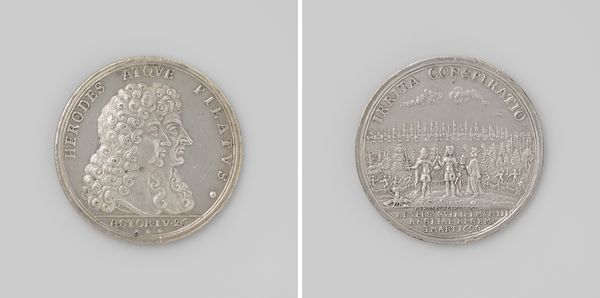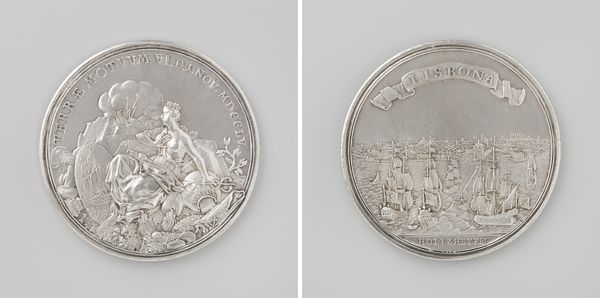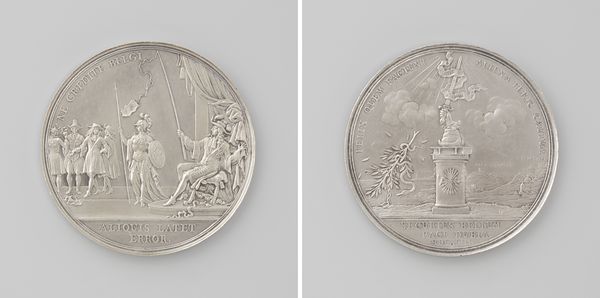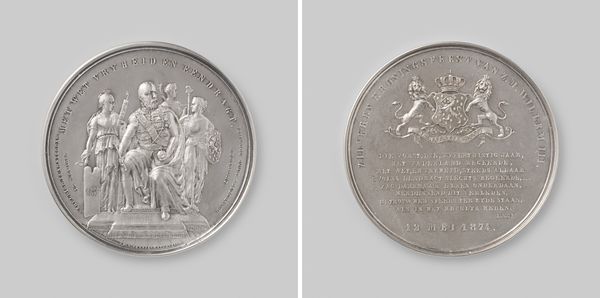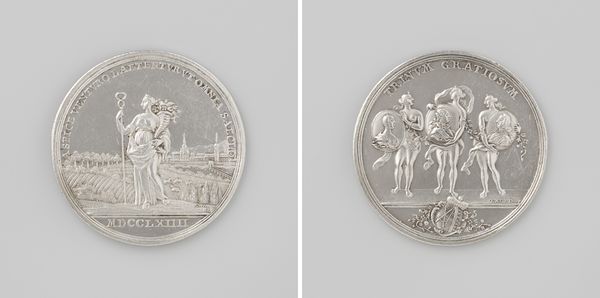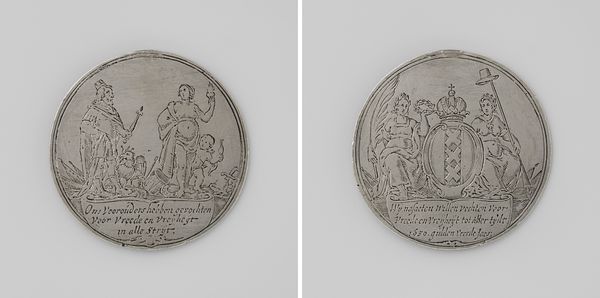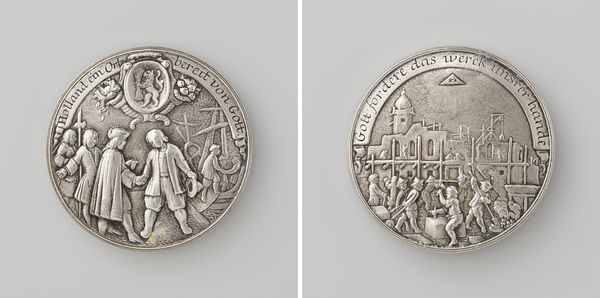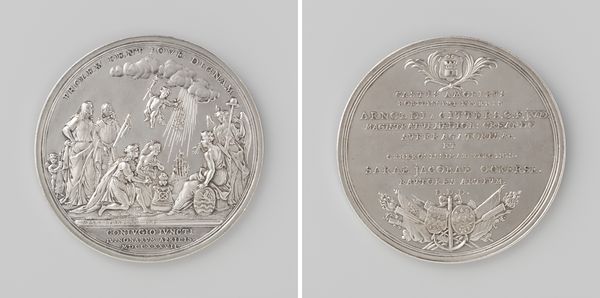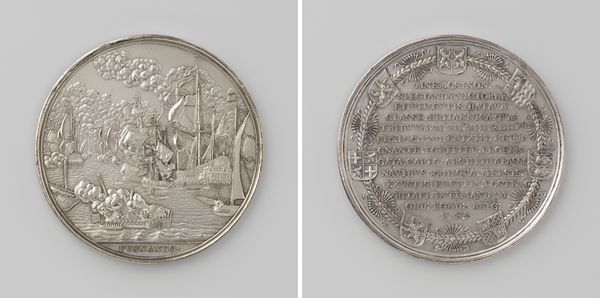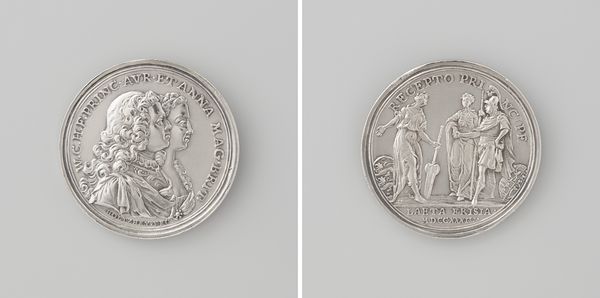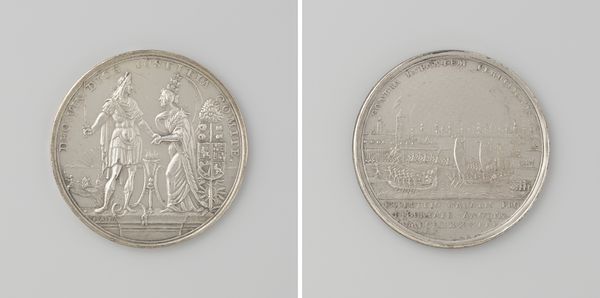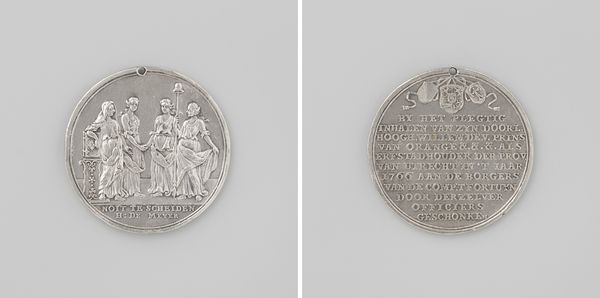
metal, sculpture
#
allegory
#
baroque
#
metal
#
sculpture
#
history-painting
Dimensions: diameter 5.4 cm, weight 51.81 gr
Copyright: Rijks Museum: Open Domain
Curator: This medal, titled "Vrede te Aken" or "Peace at Aachen," was crafted in 1748. It commemorates the treaty signed in Aachen, now modern-day Germany. The artist's style aligns with the Baroque era, and its creation involved the meticulous manipulation of metal to capture the intricacies of this historical moment. Editor: It's amazing how dense the imagery is for something that fits in the palm of my hand! Visually, the composition feels quite balanced. I notice these large gatherings depicted with really intricate details. Curator: Indeed. The medal portrays an allegory of the treaty on one side, showcasing representatives in session. It is a snapshot into how international relations were viewed and conducted, serving almost as a form of propaganda through art. The other side represents the end of conflict. Note that treaties back then, while offering official cessation of war, were just pauses dictated by exhaustion, and they would give involved parties enough time to remobilize, so that conflict could continue sometime later. Editor: Interesting! I initially see two very different moods separated across each side, and one feels tense, formal while the other appears to portray something sacred with these radiating lines coming from above that make a big dramatic statement, yet they're joined into a cohesive whole by this perfectly round shape, like the circle of peace finally reached? Does the medium itself, the metal, play into this meaning? Is the material intentionally long-lasting, designed for preservation, mirroring that fragile hope of durable peace? Curator: That’s perceptive. The permanence of metal does indeed lend itself to the aspiration of lasting peace. However, remember that such medals often served a political purpose—they were tools to promote narratives and solidify power. Also note, it is common of the Baroque period, that many symbolic themes could hide a wide array of contradictory interpretations or purposes, and sometimes, one must consider them as aesthetic, formal choices first, not simply ideological symbols. Editor: It seems contradictory that it's supposed to inspire this sentiment of peace when I look closer, and notice the hard material contrasts this very feeling. There is something to be said that for war, the goal isn't just winning, but about control over the narrative, that feeling like peace will always come at a price. Even captured and compressed in coin, such big ambitions. I guess, as they say, history is literally metal! Curator: Ha, I appreciate your spin, both artistically and historically grounded. It offers us today not only a glimpse into the past but a mirrored reflection of the aspirations and contradictions we grapple with even now.
Comments
No comments
Be the first to comment and join the conversation on the ultimate creative platform.

